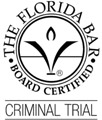The First Step Act was a major bipartisan criminal justice reform bill signed into law in 2018. Its primary goal was to make the criminal justice system fairer and reform Federal prisons, particularly with regard to allowing early releases for some inmates, and reducing the sentences of others.
With Federal prison populations rapidly growing, the Federal government was eager to lower prison population numbers and reduce re-offending. The impacts of the First Step Act have been mixed, with many inmates being released while others have not had their cases examined at all.
What Does the First Step Act Do?
The First Step Act contains a number of different provisions dealing with mandatory minimum sentences, as well as a credit system dealing with “good time” credits and “earned time” credits. In addition, for people with three or more convictions on a “three strikes” rule, they are automatically sentenced to 25 years in prison rather than a life sentence.
This includes drug offenses, for which a third strike can often be unduly severe. When the First Step Act first came into place, a number of offenders started to be given lower sentences in court, and many others with pre-2010 crack cocaine offenses became eligible for early release.
“Good time” credits can be earned by avoiding disciplinary records while incarcerated. The First Step Act increased the cap on these credits from 47 days per year to 54 days per year, meaning that sentences can be cut by an additional week for each year incarcerated. While this may sound small, the major impact is for those inmates who have already been incarcerated for long periods of time, as the change applies retroactively.
“Earned time” credits can also be gained by participating in programs relating to vocational training and rehabilitation. These kinds of credits can allow inmates to be released to home detention or halfway houses, depending on the inmate’s circumstances. Some inmates cannot earn these kinds of credits if they have been convicted of particular kinds of crimes, such as immigration offenses, drive-by shootings, and other serious offenses. The goal of these credits is to reduce recidivism, and increase rehabilitation for inmates to help them reintegrate back into society upon release.
The First Step Act also includes a pilot program for elderly offenders, expanding provisions of the Second Chance Act to allow elderly inmates (or those who are terminally ill) to be placed in home confinement. Elderly offenders are those who are 60 years or older, and must not have committed violent crimes or sex offenses.
Finally, inmates are required (where possible) to be housed within 500 driving miles of their primary residence, and ideally as close as possible. This is to facilitate visits with family and to maintain ties to the inmate’s community.
There are some issues with the way that the First Step Act is carried out, however. One of the major problems is that the First Step Act gives significant discretion to judges, which means that sometimes cases don’t even make it to a hearing before they are rejected.
In addition, algorithms are used to determine who is eligible for “earned time” credits, which can be discriminatory due to algorithmic processes and systemic racism. On top of these issues, there are also problems with knowing just how effective the First Step Act is: the Bureau of Prisons has a significant lack of transparency, which makes it hard to know how many credits are being granted each year.
It’s also important to note that the First Step Act only applies to Federal prisons and sentences, which forms a relatively small part of the overall national criminal justice system.
How to Apply Under the First Step Act?
If you believe you are eligible for credits or a reduced sentence under the First Step Act, there are a number of different steps you can take. First, you will need a lawyer to help you and represent you, as the process can be difficult and many applications are denied.
Second, you can consider which part of the First Step Act you want to apply for consideration as part of:
- Reduction in sentence;
- Earned credits for completion of a recidivism reducing program;
- Compassionate release; or
- Elderly offender pilot program.
For applying for a reduction in sentence or compassionate release, the process involves making a motion to the court, which can be made either by the inmate directly, the Federal Bureau of Prisons (BOP) Director, the prosecutor who prosecuted the offense, or the sentencing court itself.
When the motion is made, the court will decide whether to grant the motion or not. If the motion is granted, you have an opportunity to make your case.
Call Stechschulte Nell For Help
If you would like to file a motion under the First Step Act for a reduced sentence, the law office of Stechschulte Nell can advise you. Call our top-rated Florida law firm at (813) 280-1244 to speak to an experienced federal defense attorney. We’re available 24/7 to take your call.









